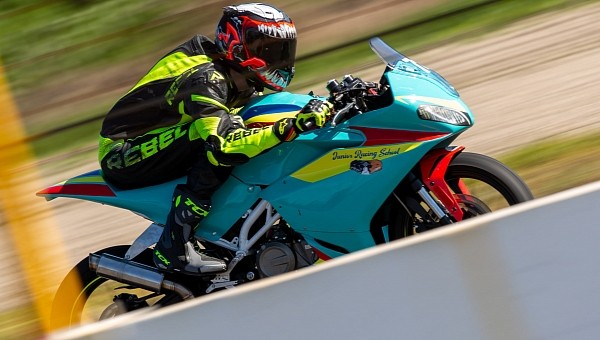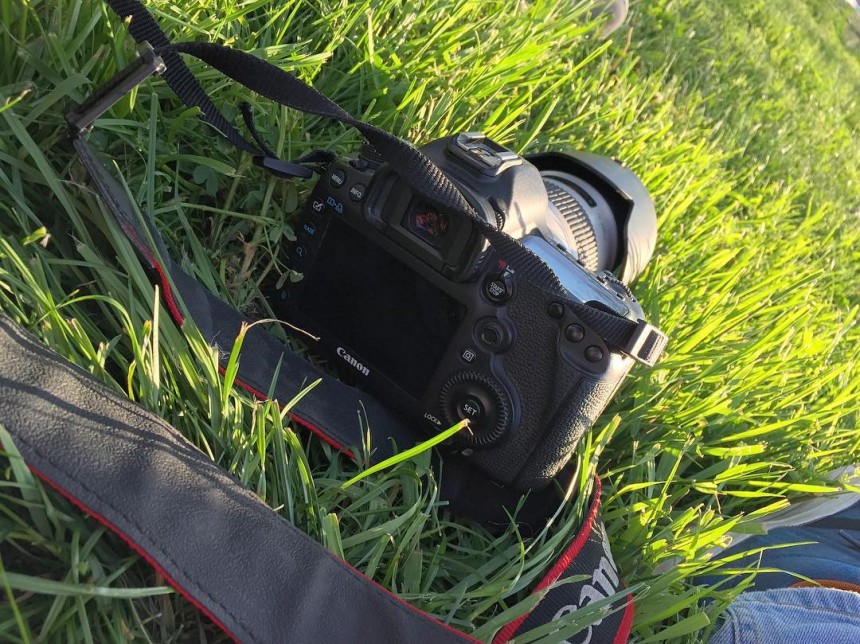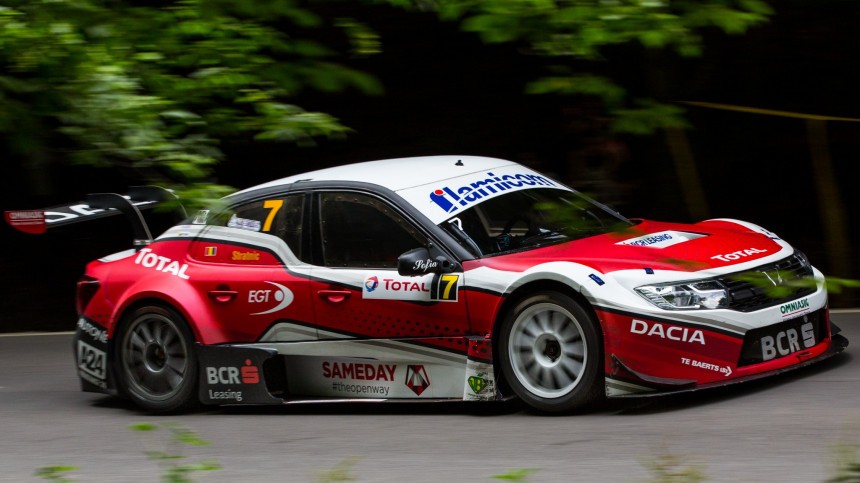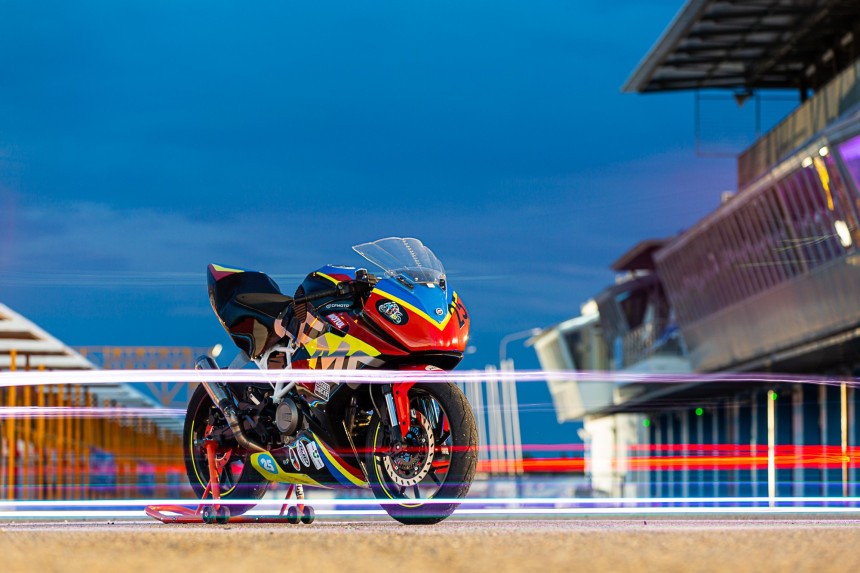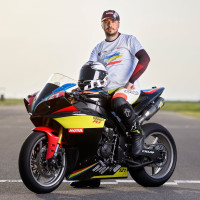You'll often hear people say that they're looking to buy the newest smartphone around, as they need to have access to that next-generation camera embedded in it. Sadly, most of them don't realize that using a 40-megapixel camera won't necessarily produce the best photos ever. If you have no clue about the basic elements of a good photograph, it's kind of like driving a sports car without having the skills to do so.
These days, it's quite easy to follow an online course or follow YouTube tutorials on smartphone photography. If you're thinking about buying a dedicated camera, try "extracting" everything you can out of your mobile one beforehand. And remember that practice makes perfect, so don't get stuck on tutorials for months in a row before going out and getting in on the action. You might remember that back in June we interviewed Bogdan Barabas, who is a photographer in the World Rally Championship.
"I was 12 or maybe 13 years old when I first held one in my hands. One of my friends had received it as a gift, it was a compact digital camera of some sort. He had read about long exposure shots, so we would go out at night to have fun practicing them. It probably had around 5 megapixels, but we couldn't care less about those figures. We were having a blast!"
It would take him a few more years before he would buy one for himself. "I got my first camera when I was 18. My mom had given me some cash so that I could get my driver's license, but I opted to get a used Canon 450D instead. Needless to say, I told my parents that I had borrowed it from a friend and that I somehow lost the money they gave me. They weren't convinced that easily, but I was keen on learning more about photography." If you've ever met a pro photographer, you probably know that they spend thousands of dollars almost every other year on various equipment.
And just like with cars, once you get started with a certain brand chances are that you'll be hooked for life. So it comes as no surprise that, even to this day, Andrei is using a Canon camera "It's a 5D Mark III that I initially considered using for various events. But I ended up doing something else with it. I'm using three different lenses but I do feel the need of adding another two of them to my backpack. I usually tend to pack it light: a cleaning kit, a few ND and circular polarizing filters and that's about it."
After that event, it took a bit more for Andrei to make his way to a proper race track. And it happened just in time for a Classic Car event. "It was then that I realized that panning shots are slightly more complicated than I thought initially. Even so, I wasn't disappointed in myself by the time the event was over. I found quite a few decent photos on the camera's card when I arrived home. But I knew that I would need to improve my technique for future events."
Since 2020, Andrei has attended dozens of motorcycle road racing events, capturing some exciting moments throughout several categories including 300cc, 600cc, and liter bikes as well. What initially started for him with taking photos of bikes going down the big boulevards in his hometown, continued with trips across the continent for top-level international events.
Naturally, there's more to it than just pushing a few buttons as event planning and track safety are crucial for success. "You always have to practice safe shooting at the track: keep a safe distance from the action, plan your escape routes, and try to stay out of harm's way at all times. If you're not sure how to do that, don't be shy and ask the track officials for the media and safety guidelines."
"It can be difficult to cover an entire event by yourself, especially if you have to run around the track to capture the angles you're looking for. You don't always get the luxury of using a moped or quad to get from point A to point B, and I end up running for miles and miles during any given day I'm at an event. That means I always need to pack adequate clothes, shoes, and a hat of some sort to protect myself from the elements."
We continued to ask Andrei about the kind of camera settings he normally uses at an event, and also about the editing process that goes on once he reaches his office. "Some events start at 9 AM and can go on until 7 PM or later. So you always have to adjust your settings accordingly."
"But I can tell you that I sometimes use Aperture Priority or Shutter Priority for guidance. As for editing, framing is one of the things I pay attention to the most. It all depends on what I'm trying to emphasize, as I try to give people a sense of the location, speed, and people that play a role in the event."
While Andrei could probably talk about the topic for days in a row without repeating himself, we asked him one last question before ending this interview. We wanted to know what kind of advice he'd provide to an aspiring photographer. "You can find everything you need to know about photography via the Internet today."
Photography is the story I fail to put into words
We've also talked to Loren Haleston this year, who has produced videos for Formula Drift and other big clients in the automotive industry. We'd like to continue this series and feature more photographers and videographers alike. And today we are talking to Andrei Minzu, a 35-year-old who has been shooting a lot of motorcycle road racing events in the past two years. But before we get into that, we wanted to know more about his first contact with a digital camera."I was 12 or maybe 13 years old when I first held one in my hands. One of my friends had received it as a gift, it was a compact digital camera of some sort. He had read about long exposure shots, so we would go out at night to have fun practicing them. It probably had around 5 megapixels, but we couldn't care less about those figures. We were having a blast!"
It would take him a few more years before he would buy one for himself. "I got my first camera when I was 18. My mom had given me some cash so that I could get my driver's license, but I opted to get a used Canon 450D instead. Needless to say, I told my parents that I had borrowed it from a friend and that I somehow lost the money they gave me. They weren't convinced that easily, but I was keen on learning more about photography." If you've ever met a pro photographer, you probably know that they spend thousands of dollars almost every other year on various equipment.
I knew that I would need to improve my technique for future events
We were curious to learn about his first contact with the world of motorsports, and it seems like it didn't all start with motorcycles after all. "I first went out to a hill climb racing event about 200 km from where I live. It was quite a spontaneous thing to do, so I decided I'd do it the night before the race. I had become curious about this sort of event for some time, and I just acted on it." You'll see two of his photos from that event included in the photo gallery. One of them features a Mitsubishi Lancer Evo, while the other shows a rare Swedish Touring Car Championship Dacia Logan.After that event, it took a bit more for Andrei to make his way to a proper race track. And it happened just in time for a Classic Car event. "It was then that I realized that panning shots are slightly more complicated than I thought initially. Even so, I wasn't disappointed in myself by the time the event was over. I found quite a few decent photos on the camera's card when I arrived home. But I knew that I would need to improve my technique for future events."
Since 2020, Andrei has attended dozens of motorcycle road racing events, capturing some exciting moments throughout several categories including 300cc, 600cc, and liter bikes as well. What initially started for him with taking photos of bikes going down the big boulevards in his hometown, continued with trips across the continent for top-level international events.
Framing is one of the things I pay attention to the most
Speaking about event planning, there are quite a few things you need to take care of before you even step out the door. "I always make sure that all the gear is working properly and that batteries are fully charged. I make sure every single SD card is good to go, and that everything is properly packed. I then look up the track, analyze the layout, and as many photos from the venue as possible.""It can be difficult to cover an entire event by yourself, especially if you have to run around the track to capture the angles you're looking for. You don't always get the luxury of using a moped or quad to get from point A to point B, and I end up running for miles and miles during any given day I'm at an event. That means I always need to pack adequate clothes, shoes, and a hat of some sort to protect myself from the elements."
We continued to ask Andrei about the kind of camera settings he normally uses at an event, and also about the editing process that goes on once he reaches his office. "Some events start at 9 AM and can go on until 7 PM or later. So you always have to adjust your settings accordingly."
While Andrei could probably talk about the topic for days in a row without repeating himself, we asked him one last question before ending this interview. We wanted to know what kind of advice he'd provide to an aspiring photographer. "You can find everything you need to know about photography via the Internet today."
"One of the things I could point out is a panning technique that has been useful to me. For better stability, I'll use my right hand to hold the camera in place, while placing my left hand on the far end of the lens. Also, be sure to pack a lense shade, especially if you're going to work out in the open!"
